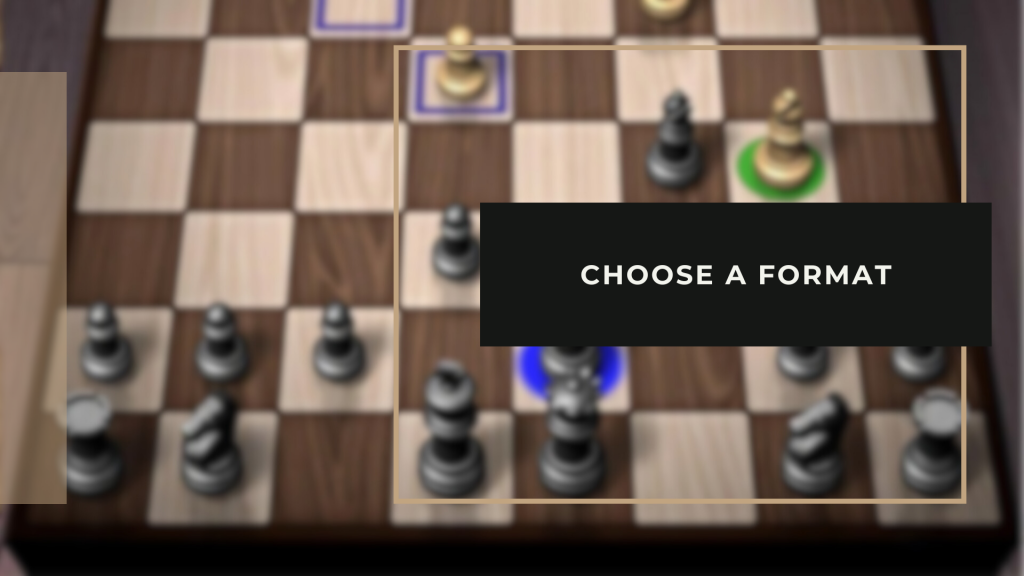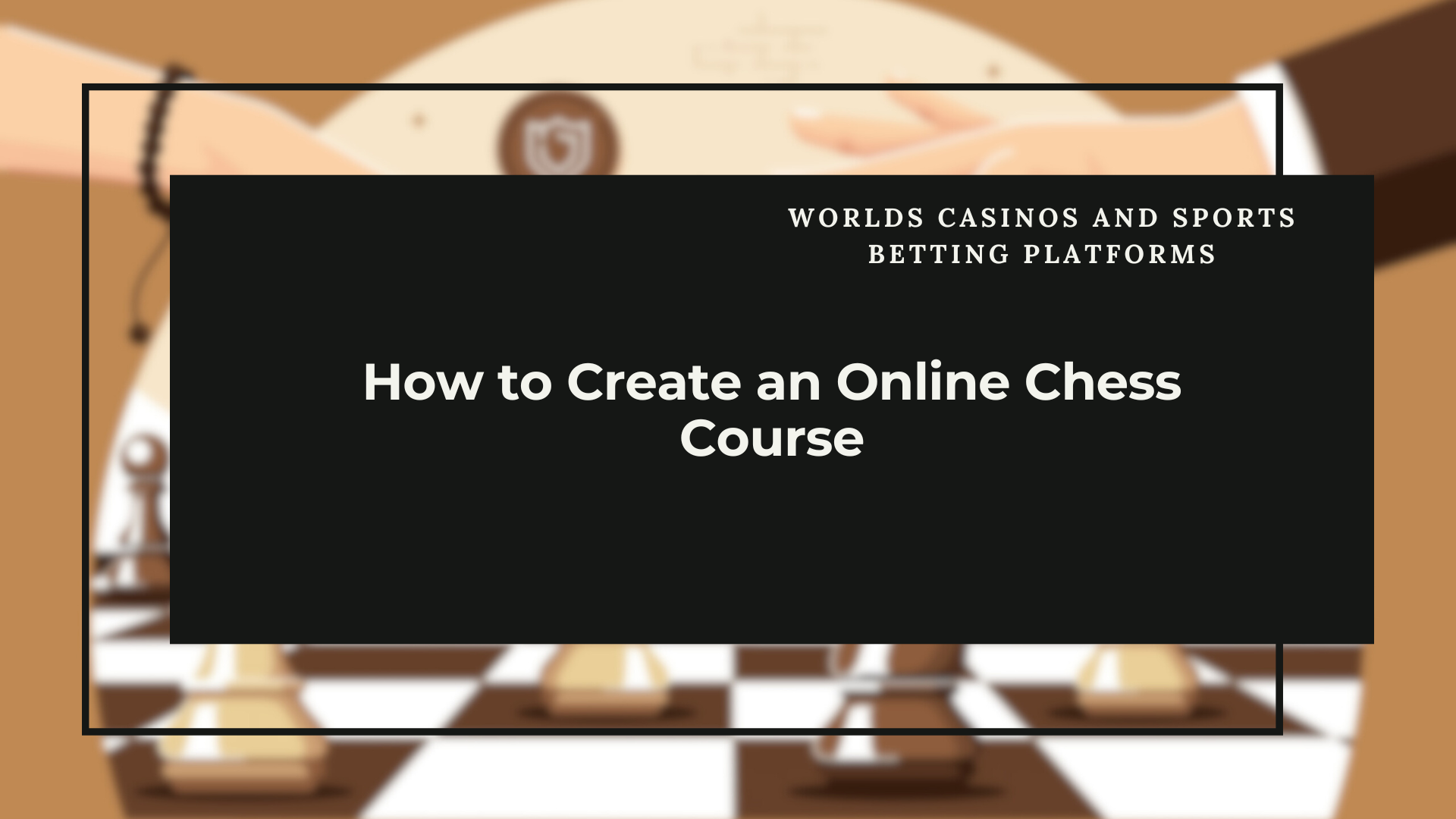Building online chess courses is an increasing trend among fans and experts. It’s a chance to impart wisdom, instruct abilities, and earn money. In the current interconnected age, making expertise in chess a lucrative endeavor has become attainable. This article will investigate the diverse ways to construct your online chess tutorials. Let’s investigate the specifics.
Benefits of Courses
Building a training that needs significant effort. Here we will examine the three main advantages you can obtain from it:
- Online chess courses enable you to connect with a large audience without location restrictions. If a person is in a busy city or isolated hamlet, if they have internet connectivity, they can join your tutorial. This wide outreach can turn into an expanded customer base and possibly greater earnings;
- Building an online course gives adaptability in both creation and distribution. You can construct the course at your rhythm and provide it at various grades, from novice to expert. Moreover, learners can enter the tutorial at their leisure;
- Marketing a chess course online gives you a chance to make your mark in the sector. By delivering excellent material and interactive sessions, you can create a name as an authority in chess. This acclaim can open doors to more chances, like requests to talk at gatherings, author volumes, or even partner with other specialists in the field.
Steps to Create
Building an online chess training includes numerous vital steps that render it detailed, captivating, and suited to various students. In this section, we will look at the basic steps in the formation of such courses.
Choose a Format

Picking the right format is an essential part of your course. Various formats are meant to accommodate diverse learning styles and demands:
- Video lessons engage visually and include spoken explanations, animations, and interactive tests. These are perfect for illustrating step-by-step methods;
- Text-based tutorials suit readers, containing elements like eBooks and articles. They provide adaptability and may also feature pictures, diagrams, or connections to support the text;
- Webinars enable real-time connection, allowing instant responses. They often feature live shows and Q&A periods, with the option of taping for future watching;
- Mixed format course mix videos, texts, webinars, and other parts to meet different learning tastes. This thorough method permits customized learning tracks and balanced content sharing;
- Interactive models and games encourage involvement through practical exercises. They assist students in applying the concepts they’ve grasped.
How chess helps in casino games, read more here.
Outline Course
Planning your chess course requires careful attention:
- First, you must choose who you are making your training for. It’s vital to figure out what wisdom is required to grasp your training;
- Defining goals is vital to lead students through the learning path;
- Segment the content into easy-to-handle sections with units and lessons for simple navigation;
- Incorporate quiz questions and drills, and consider their pertinence and complexity level;
- Supply extra resources, although demanding, improves learning;
- The course must be refreshed routinely, and stay current with alterations in chess tactics.
Create Course Content
Forming training content is a complex task that demands comprehension of many factors. Here’s how to build efficient tutorial content:
- Understand the ability and requirements of your students. This knowledge helps create content that is neither too simple nor too intricate;
- Express what students will obtain from the course. This assists in shaping targeted content;
- As earlier mentioned, the format might comprise videos, texts, webinars, etc. Picking the correct medium is crucial for effective content delivery;
- Ensure the content is attractive. Employ images, real-world examples, and quizzes to keep students involved;
- In a chess training, add real match situations, riddles, or models that enable students to utilize what they’ve absorbed;
- Content must be reachable to all, including those with impairments. Captions for videos and replacement text for images are some ways to boost accessibility;
- Supply extra readings, instruments, or outside links for those wishing to delve deeper;
- Include assignments to assess student progress.
Find Audience
Identifying the right audience for your online chess training is a vital stage in guaranteeing its triumph. Here’s how to connect with your potential students:
- Determine who will gain from your course. Are they chess newcomers, middle-level players, or masters? Knowing this aids in focused promotion;
- Websites like Facebook, Twitter, and Instagram can assist you in reaching a broad audience. Offer insights, previews, or complimentary lessons to draw potential students;
- Participate in chess forums, clubs, or internet groups. Take part in talks, spread your wisdom, and tell them about your course;
- Presenting free classes can exhibit your instructive approach and training material, luring those eager to learn further;
- Compose chess-related blogs. Dispensing your wisdom openly can allure an audience eager to explore more via your course;
- Partner with educational websites or sites that boost online study. They can assist you in connecting with an audience specifically searching for educational content;
- Investing in focused advertising on platforms like Google or social networks can help you connect with specific groups keen on chess;
- Urge content students to recommend others. Favorable word-of-mouth can be a potent tool.
Build Sales Funnel

A sales channel is a planned method to lead possible buyers through the phases of awareness, curiosity, choice, and activity. For an online chess course, a sales channel might comprise:
- Raise awareness of your chess training through social media, blogs, advertising. Share complimentary content, interact with your audience, and inform them of what your tutorial provides;
- Once awareness is created, cultivate the interest by offering more detailed data, praise, free samples, or appealing content that shows the training’s worth. Use focused ads to keep the link;
- At this point, potential buyers are weighing your course against others. Provide incentives like price reductions, packages, or privileged content to persuade them to select your training. Underline unique aspects, and illustrate how your course is different;
- The last step is acquisition. Assure an effortless buying procedure by supplying various payment methods and clear directions. Offer instant entry to the course or supply a welcome email with all needed information;
- After the sale, persist in engaging with customers through follow-up emails, and more content. Solicit feedback and create a community that keeps them involved.
Final Thoughts
Forming an online chess course is a comprehensive procedure. Each stage demands meticulous planning. This path is filled with chances to innovate, converse, and dispense valuable wisdom to a broad spectrum of chess fans. With care, originality, and a lucid grasp of the principles detailed in this article, success is not merely likely, it’s attainable.

